Do you crave getting tailored spa treatments for your face? What if you had a spa treatment at home?
Indeed, luxurious and decadent face masks will never disappoint you. They will rejuvenate your skin and address your specific skin concerns. If you include face masks in your regular skincare routine, you won’t regret it!
However, commercial or tailored face masks can be quite expensive. Consequently, you can start your own spa at home, with natural ingredients found in your kitchen.
DIY face masks with natural ingredients have been around forever and feature ingredients you may even eat. Also, they are cheap , easy to make, and offer marvelous results. And finally, they are generally innocuous for your skin, if you choose the right ingredients.
Nevertheless, you must be aware of your own skin type before making your DIY face masks. What suits your girlfriend doesn’t necessarily suit your skin’s needs! Therefore, you must choose the right ingredients for your skin type if you want to get the best results for your skin.
In this article, I’ll explore simple DIY face masks you can add to your daily routine. Whether you have dry, oily, or dull skin, you’ll find the right mask to address your personalized skin needs.
Disclaimer: This post contains affiliate links to help me support this blog. I may earn a commission whenever you click on the links and purchase the products, with no additional cost to you. Thanks in advance for your support!
Nourishing Hydration: DIY Face Masks for Dry Skin
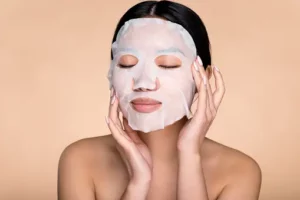
What is dry skin?
As you know, dry skin involves itching, early wrinkles, flashes, and crocodile skin. Thus, dry skin can lose water very quickly, looking dehydrated and dull. Consequently, dry skin needs deep hydration to improve its appearance and its basic protection function.
Which ingredients do you need?
Key ingredients for dry skin facials include honey, avocado, and oatmeal.
Honey
Honey is a natural moisturizer that improves the regeneration and healing of your skin cells. Its antibacterial and anti-inflammatory properties make honey suitable for people dealing with eczema, psoriasis, or rosacea.
Moreover, honey gently exfoliates dry skin, leaving it supple and soft. If you want to get a youthful and even skin, honey should be on your top list of natural ingredients.
Avocado
As a great source of biotin, avocado prevents dry skin and improves the overall skin appearance. Moreover, avocado improves your skin elasticity and can help speed your skin repair. Therefore, this fruit is recommended for people having chronic skin condition such as eczema or psoriasis.
Oatmeal
This cereal is not only good for your breakfast, it’s also excellent for your skin! Indeed, oatmeal reduces inflammation and relieves dry, itchy, and irritating skin.
Also, oatmeal is a gentle exfoliant that removes dead skin cells, while promoting a radiant complexion.
Consequently, oatmeal is an ingredient approved by dermatologists who tend to recommend oatmeal-based products to their patients. If you don’t like to use pure oatmeal on your face, you can rely on brands such as Aveeno.
Examples of hydrating DIY face masks for dry skin
Recipe #1: My own honey face mask
Now, this recipe is very simple. I do use it myself, though I have combination skin. Since I discovered this secret from Ginger Rogers in Vintage Secrets Hollywood Beauty, I can’t get enough of this DIY face mask.
My skin texture has improved since I’ve started using it regularly once a week. I guarantee that you won’t regret it if you try!
Take a teaspoon of honey and massage it liberally on your face. You must have cleansed and exfoliated your face first before applying honey on your face. Let it sit for 20 minutes and rinse it with lukewarm water. Then, moisturize your skin.
Recipe #2: Oatmeal face mask
Mix 1/3 cup of oatmeal and 1/3 cup of water. Apply the mixture on your face and let it sit for 10 minutes. Then, rinse with lukewarm water.
Recipe #3: Oatmeal and Honey face mask
Mix equal parts of oatmeal and honey. Apply the mixture on your face for 10 minutes. Then, rinse it well with lukewarm water.
Recipe #4: Avocado and Honey face mask
Mix 1 tablespoon of coconut oil, 1/2 avocado, 1 teaspoon of honey , and 1 teaspoon of water. Apply the mixture on your face during 15 minutes. Then, rinse with lukewarm water.
Combatting Oiliness and Acne: DIY Face Masks that Work
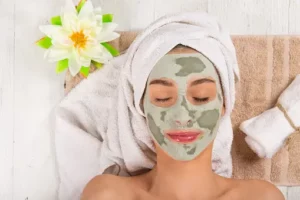
What causes oily skin?
Oily skin results from overactive skin glands. Just below the skin’s surface are these tiny sebaceous glands that produce a moisturizing skin oil called sebum. However, sebum is not bad when it comes to a balanced amount. Indeed, sebum keeps your skin soft, smooth and provides a protective barrier against the elements.
As the sebaceous gland produces sebum, the oil rises to the skin’s surface through the pores. From there, it spreads naturally over the skin. When the sebaceous glands are too productive, too much oil is produced. Either it accumulates on the skin’s surface or it collects in the pores. Whatever the case, both situations cause problems.
Oily skin can be difficult to control, because many of the available remedies only aggravate the problem. Treatments that are too harsh can cause the skin to overreact. Therefore, your skin protects itself by producing even more oil. That’s not exactly the result you desire!
That’s why you must be careful when you choose your ingredients to make your DIY face masks for your oily skin.
Which ingredients do you need?
If you have oily skin, you’ll need natural astringent ingredients helping you to control excessive oiliness.
Jojoba oil
Do you think that applying oil to your oily skin is bizarre and counterproductive? If this is your case, please bear with me. I totally understand your worries. But you must know that jojoba oil is unique. Indeed, it has been a folk remedy for ears among Native Americans to treat oily skin and acne.
Indeed, jojoba oil is able to mimic sebum to trick sebaceous glands to produce less sebum. Thus, jojoba oil helps to keep your oil levels balanced. However, you shouldn’t use too much jojoba oil, otherwise it will worsen your skin condition!
Tomato
Rich in salicylic acid, tomato is a common acne remedy. Indeed, it helps absorb excess skin oils and unclog your pores.
Aloe vera
Many people use aloe vera to treat oily skin because it helps treat flaky skin caused by oily patches. In particular, this was demonstrated by a study performed by Mayo Clinic in 2023.
Almonds
Ground almonds are excellent to treat oily skin. Indeed, they exfoliate your skin while sopping up excess oils and impurities.
Egg whites and lemons
Egg whites is a folk remedy that has been around for years; and even celebrities like Elle Macpherson use them. Egg whites tighten your pores, but it’s believed that their effectiveness is increased by lemon juice. Now, I recommend you to be cautious with these natural ingredients.
Indeed, these skincare hacks are not as safe as they seem. Egg whites can increase oiliness in the long run, while lemon juice increases your skin photosensitivity.
I’ll give you the recipe nonetheless; but if you can stay away from it, do it! Instead, choose among the other ingredients listed here.
Clay
Cosmetic clays are a very popular remedy to heal oily skin and acne. Indeed, they help absorb skin oil and treat many skin conditions. For oily skin, I recommend green clay for its highly absorbent and healing properties, especially for mild acne.
Examples of astringent DIY face masks for oily skin
Recipe #1: Clay face mask
Mix 1 teaspoon of green clay with water (or rose water if you have it). Apply the clay paste on your face and let it sit until it dries. Then, rinse with lukewarm water.
Recipe #2: Egg whites and lemon face mask
Combine 1 egg white and 1 teaspoon of lemon juice. Apply it to your face and let it sit until the mask dries on your face. Then, rinse with warm water.
Recipe #3: Almond and honey face mask
Mix 3 teaspoons of ground almonds with 2 teaspoons of honey. Apply the mixture of your face and let it sit during 15 minutes. Then, rinse with lukewarm water. Please, don’t use this face mask if you have nut allergies, ladies!
Recipe #4: Aloe vera nighttime face mask
Apply a thick layer of aloe vera gel on your face before bedtime. Then, sleep with it and rinse it in the morning.
Recipe #5: Tomato and sugar face mask
Mix the pulp of 1 tomato with 1 teaspoon of brown sugar. Massage the mixture into your skin and let it sit during 5 minutes. Then, rinse with lukewarm water.
Recipe #6: Clay and jojoba oil
Mix equal parts of green clay and jojoba oil. Apply on your face and let it sit during 10 minutes. Then, rinse with lukewarm water.
Gentle Brightening: Achieving a Natural Glow with DIY Face Masks

Why do you need skin brightening?
Do you think that your skin is dull? Then, you must know that there’s a solution for you! Thanks to skin brightening, you’ll be able to increase your skin’s radiance and vibrancy. In particular, I’d recommend skin brightening treatments if you have the following skin conditions:
- sun spots
- dull skin and/or uneven skin tone
- acne scars
- hyperpigmentation
For example, you can use vitamin C in your skincare routine to do so. Or you may rely on dedicated natural ingredients…It’s up to you!
Which ingredients do you need?
Key ingredients for skin brightening include turmeric, yoghurt, and lemon.
Turmeric
Turmeric is a natural ingredient that Indians have been using for centuries to brighten their skin. Indeed, turmeric contains curcumin which has powerful anti-inflammatory and antioxidant properties. Therefore, turmeric helps prevent the overproduction of melanin. Your skin will become more toned and even.
Yoghurt
This natural ingredient is not only good to eat! Indeed, yoghurt exfoliates your skin and increase your skin elasticity. Thus, yoghurt removes your dead skin cells, improves your skin texture, and promotes cell renewal.
Lemon
Lemon juice is very popular on the Internet and social media these days. Indeed, it’s rich in vitamin C and alpha-hydroxy-acids. These elements helps exfoliating and brightening your skin. However, lemon juice is highly acidic and can cause dark spots and burns. Consequently, I recommend you use honey instead.
Example of skin brightening DIY face mask
Mix equal parts of turmeric, honey, and yoghurt in a bowl. Apply this mixture on your face and let it sit during 20 minutes. Then, rinse with lukewarm water.
Some Tips For Using DIY Face masks

Before using DIY masks, you must apply the following tips.
The Patch Test is essential
Some DIY masks may contain allergens. Consequently, you must always perform a patch test before applying a new mask to your face. This will ensure that you don’t have unwanted allergic reactions.
Always Clean Your Skin
For better absorption, always apply your DIY masks to clean and dry skin.
Frequency is important
Use your DIY masks 1-2 times a week, depending on your skin’s needs.
Take Care of Storage
Always use fresh ingredients to make your DIY masks. Also, prepare only what you need to avoid using masks with spoiled components.
Moisturize your skin
Always follow up with a moisturizer adapted to your skin type to lock in the benefits of the mask.
Conclusion: Embracing Individuality in Skincare For Your DIY Face Masks

Do you want to address your various skin concerns without breaking the bank? Then, simple DIY face masks will offer a natural and effective way to do it.
Indeed, you can create personalized treatments that hydrate, clarify, brighten, soothe, and rejuvenate your skin. All you need to do is to understand your skin type and select the right ingredients for your skin concerns.
Nevertheless, you must always remember to patch test new ingredients and to maintain a regular skincare routine. Indeed, patience is necessary with natural ingredients as results don’t show up overnight.
With all these elements, you will enjoy the process of pampering your skin with these simple DIY masks. You don’t have to get out of your home to have a luxurious spa effect!
Well, that’s it for today? What do you think of these simple DIY face masks? Have you used some of these recipes? Do you intend to try them? Feel free to share in the comments below!
Take care, lovelies!
Want more content from me? Join my newsletter today and receive the latest updates of my website. Also, you’ll receive a wonderful gift in your email!


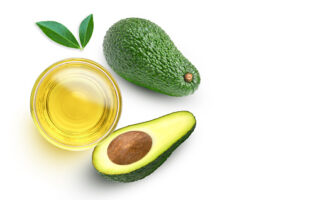
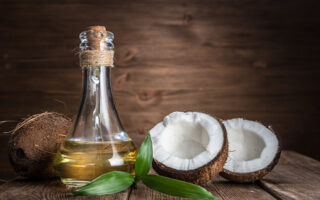
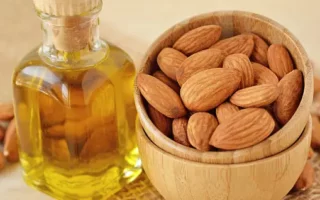
In my opinion, it’s important to do a patch test before applying any new mask to your entire face to ensure you don’t have an adverse reaction. And while DIY masks can be great, they might not replace more targeted treatments for serious skin concerns. Overall, they can be a delightful addition to your skincare routine!
Yes indeed !
I love the idea of homemade face masks, as I am never organized enough to buy one. My skin tone has changed as I age, so I will definitely be trying That Ginger Rodgers face mask. On another point, I lived in India for many years and used turmeric daily to brighten my skin, and I can attest to the fact it works. It does improve skin tone.
Thanks!
This is such a great guide to making your own face masks. Going for a facial is a big treat for me, but it is often not possible because of the cost. So making face masks with natural ingredients, is far more budget friendly.
I find it fascinating that turmeric is used for a face mask. I often use turmeric to treat small cuts and grazes, and although it works wonderfully, it does stain my skin. So does the turmeric stain your face, or do the other ingredients prevent it? Or is the face for long enough to stain it? Thank you for clarifying.
Hello Line, turmeric won’t stain your skin if you mix it with other ingredients. However, it might stain your fingernails…
I enjoyed your article on different masks for different skin concerns. Exploring suitable types of products that I can put on my face for specific concerns would be helpful instead of putting something that would be good in general. I have never made my mask before, but your recipes interest me. I am particularly interested in your diy maks for acne/oily skin as this is something that I am struggling with. I already have many ingredients in your recipes so that I can get started right now. Thanks.
You are welcome!
awesome article. I love all the options you have included here. It will save a ton being able to create your own facemasks. The extra plus is that these are all natural healthy ingredents so thats another plus, unlike when you get it done professionally and cannot always guarantee whats being used. The patch test also is also a great tip as it ensures there is no major allergic or undesirable reaction. Another thing is that i never really thought about skin brightnening, but you are right when it comes to sun spots, dull skin and most especially hyperpigmentation. i will most defientely be trying out that one. just from this, it looks like its super easy to do so i really have no excuse.
Thanks!
Hello,
Wow, this post is incredibly helpful! I have always been interested in DIY skincare, but I was not sure where to start. The detailed breakdown of ingredients and their benefits for different skin types is exactly what I needed.
I cannot wait to try the avocado and honey face mask for my dry skin. Also, the tips on doing a patch test and following up with a moisturiser are great reminders.
Thanks for sharing these fantastic recipes! Have you tried the clay and jojoba oil mask for oily skin? I am curious to hear about your experience with it.
Thanks for your comment! No, I’ve never tried jojoba and clay mask because I don’t have oily skin, unfortunately…
Thanks for the informative article. I have in the past used DIY remedies on my skin and they really do work. I also think that the concept of only putting on your skin what you would eat has merit as our skin absorbs chemicals. It also stands to reason that eating these foods would be nourishing your skin from the inside. What are your thoughts on these ideas. I think a good skin routine from a young age pays off and leads to good skin as you age. Thanks for the great advice.
You’re welcome Lyn!
Hi there
Your article is an excellent resource for anyone looking to address various skin issues naturally and affordably. The detailed recipes and clear instructions make it easy to create effective face masks at home using common ingredients. The inclusion of masks for different skin types and concerns ensures that there is something for everyone. This thoughtful and comprehensive guide empowers readers to take control of their skincare routine with simple, natural solutions.
Which one did you find most effective for your skin?
Thanks for your comment! I like the honey mask for myself…
I really enjoyed reading your article on DIY face masks for different skin concerns! Your step-by-step instructions were clear and easy to follow, making it accessible for anyone to try at home. I especially loved the avocado and honey mask for dry skin—it sounds both nourishing and soothing. One question I had was about storage: can any of these masks be made in advance and stored for later use, or is it best to use them immediately? Additionally, do you have any tips for customizing these recipes for people with sensitive skin? Your comprehensive guide has inspired me to try making my own face masks. Thank you for sharing such valuable beauty tips!
Thanks for your comment! It’s better to do make your face masks and use them immediately!
Excellent guide on DIY face masks! I love how you’ve categorized them by skin type and provided easy-to-follow recipes. Your tips on ingredients and application are super helpful. Thanks for the detailed and practical advice!
You’re welcome !